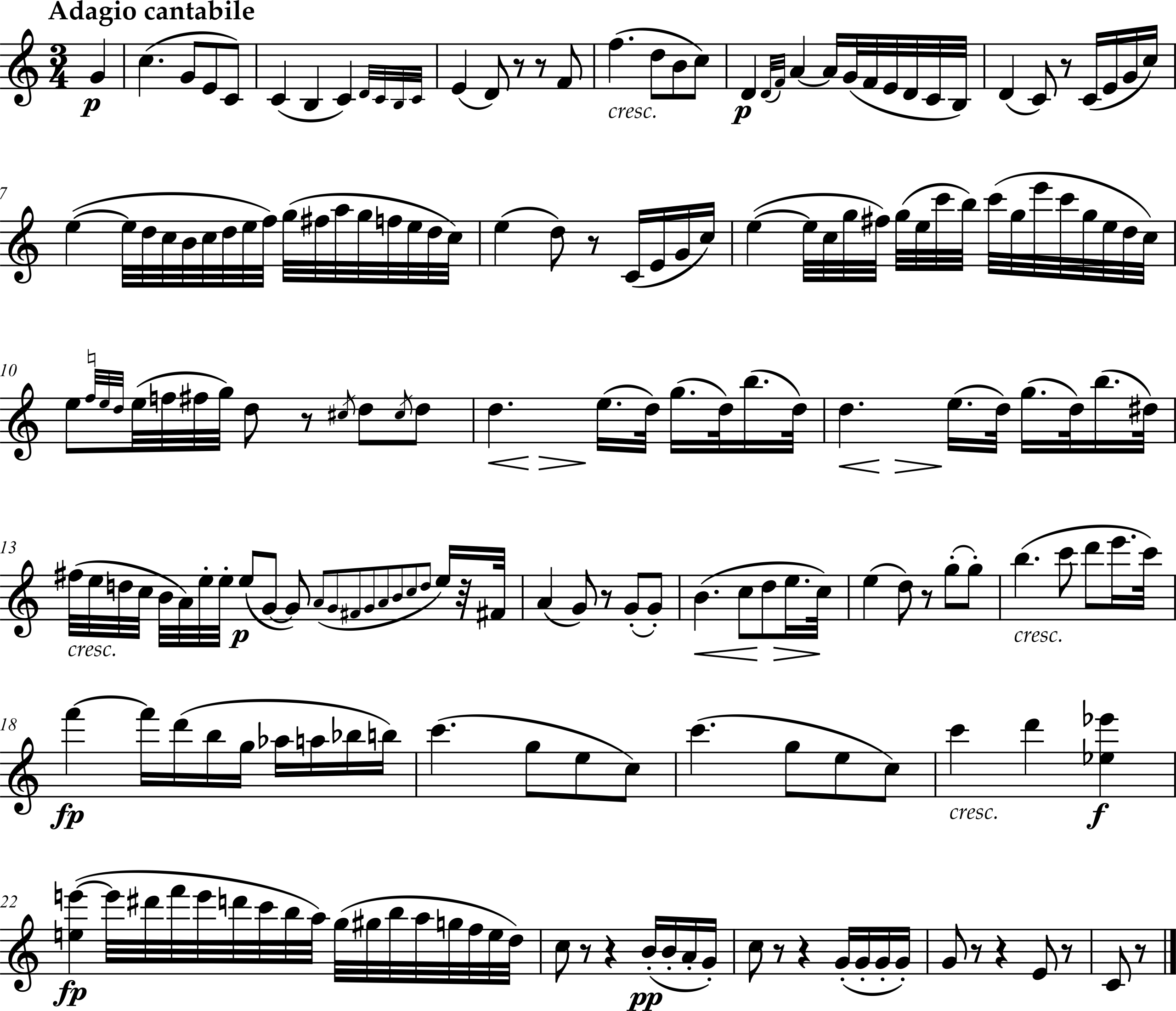B. Ties and Dots with Thirty-Second Notes
Ties with Thirty-Second Notes
In Exercise 7B-1, the bottom clarifies how rhythmic patterns in the top staff align with the underlying quarter-note beat and its subdivisions. While the remaining exercises are all single-line exercises, a similar rhythmic grid should be imagined for each exercise to facilitate accuracy.
Exercise 7B-1: Joseph Bologne, Sonata for Flute and Harp, Movement 1
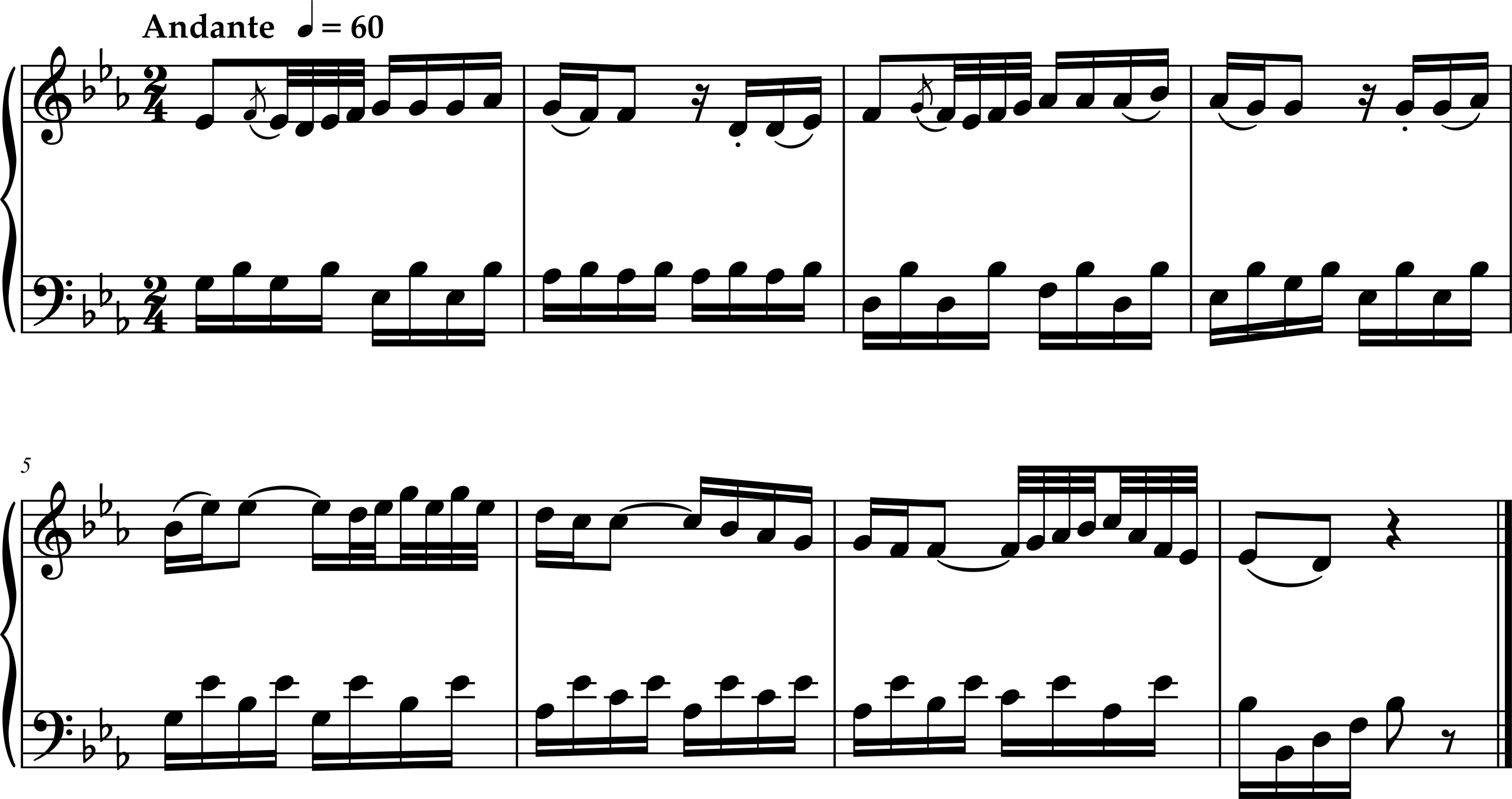
Exercise 7B-2: Johann Sebastian Bach, Cantata Number 140, Wachet auf, ruft uns die Stimme, Movement 3, Aria Duetto
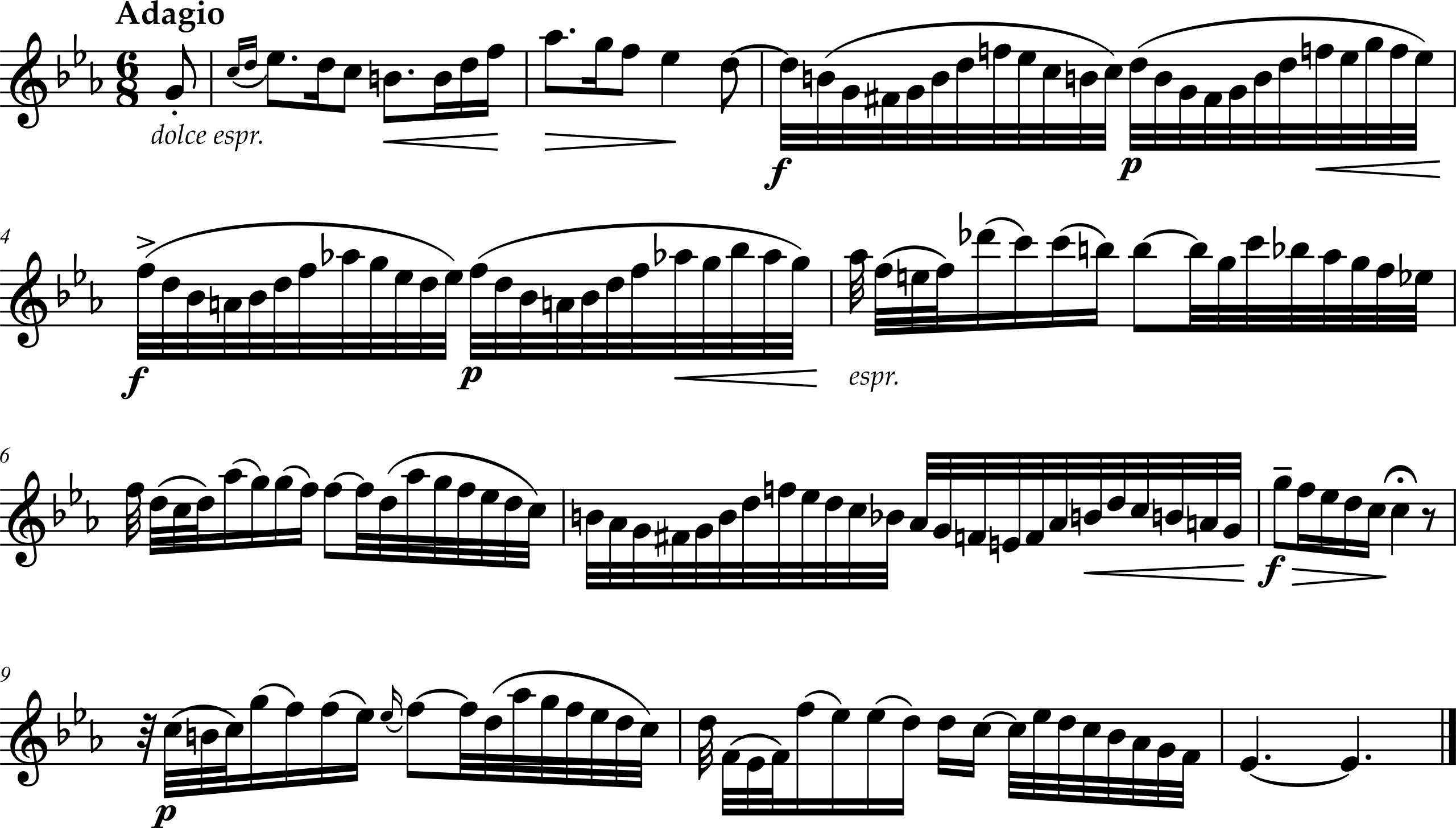
Dots with Thirty-Second Notes
Exercises 7B-3 and 7B-4 feature dotted patterns at two different metrical levels: dotted-eighth-plus-sixteenth patterns spanning a quarter note and dotted-sixteenth-plus-thirty-second patterns spanning an eighth note. The challenge is to accurately distinguish between the two in real-time reading. This can be especially difficult with the vocal notation of Exercise 7B-4, where beaming is used flexibly to convey syllabic versus melismatic text setting.
Exercise 7B-3: Ferdinando Carulli, Deux airs variés for lyre or guitar, Variation Number 5 on Original Theme
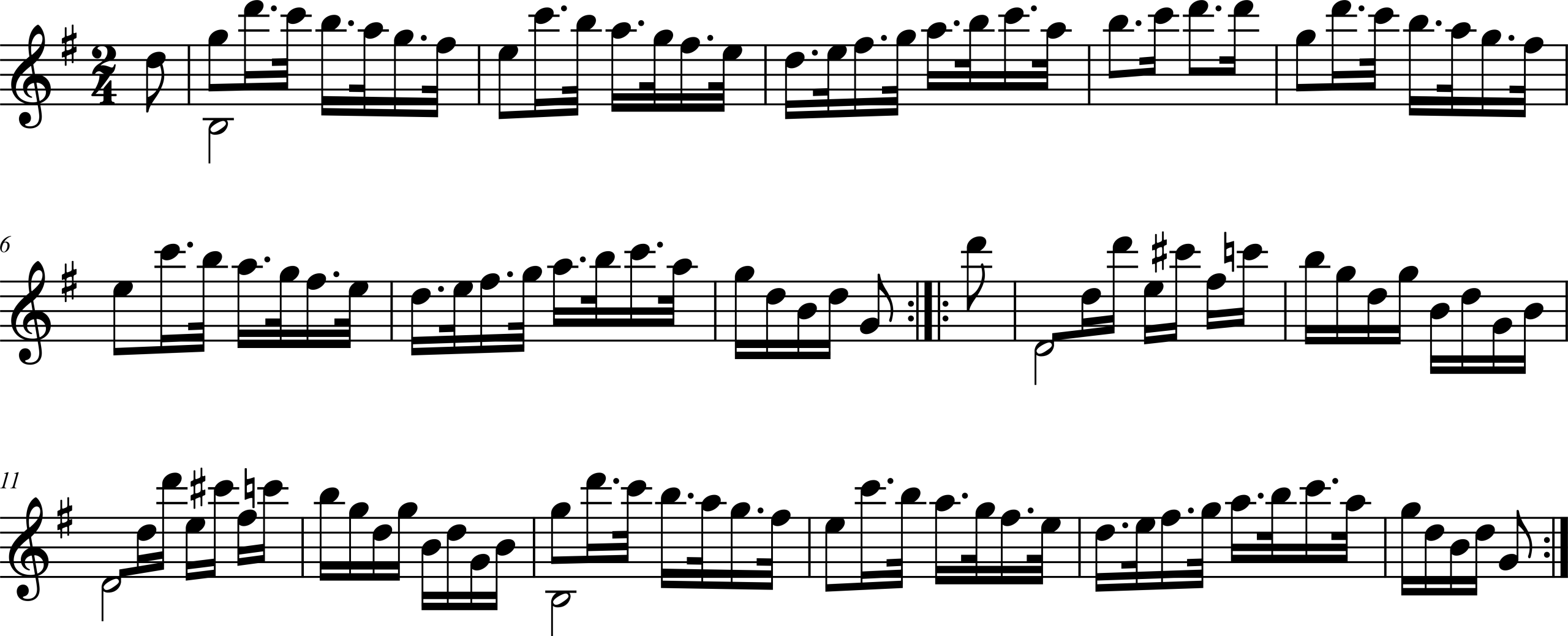
Exercise 7B-4: George Frideric Handel, Athalia, “Gentle Airs, Melodious Strains”
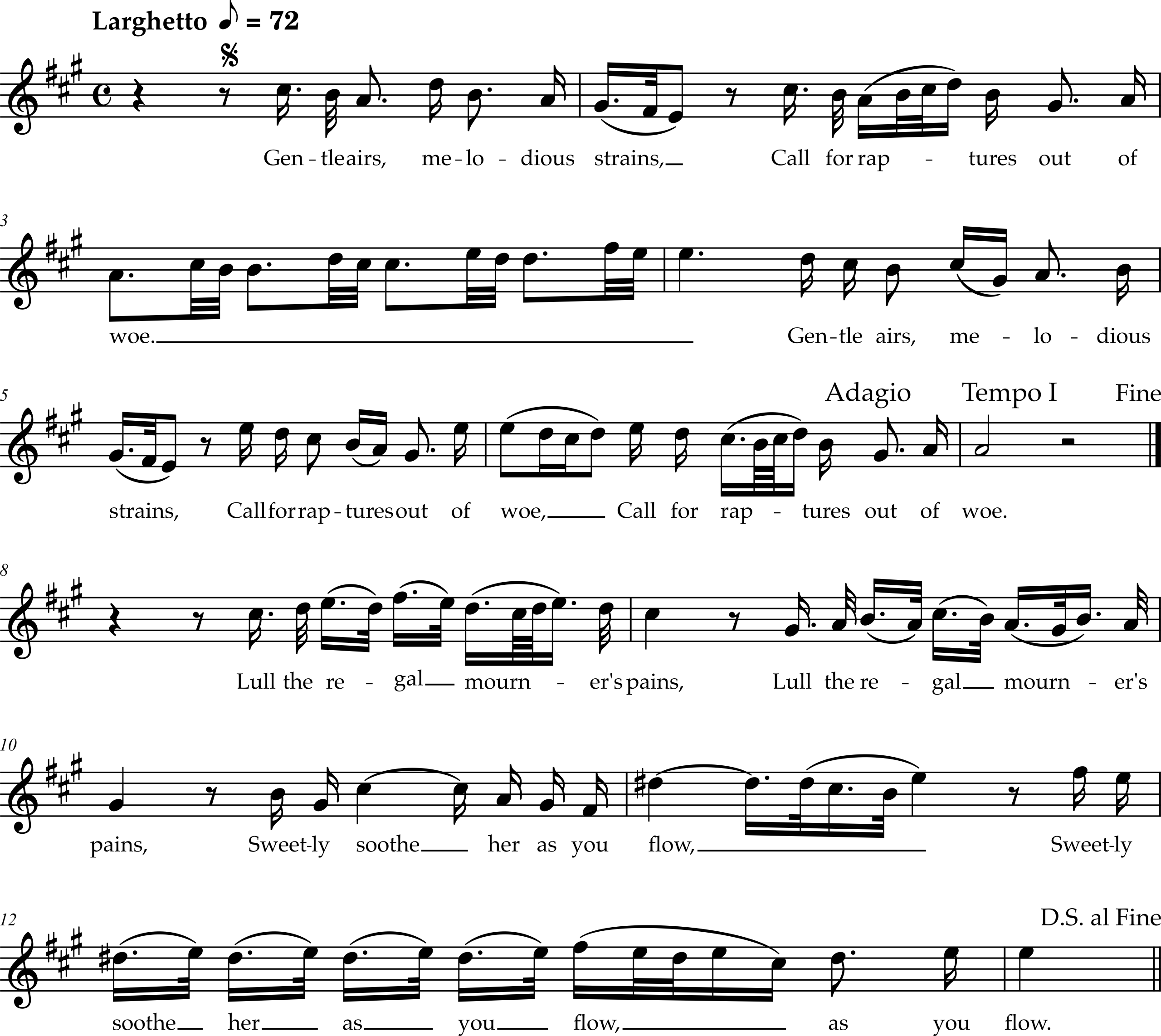
Mixing Both Together
Exercise 7B-5: Emilie Mayer, Symphony Number 5, Movement 2

Exercise 7B-6: Ludwig van Beethoven, String Quartet, Opus 18, Number 2, Movement 2
